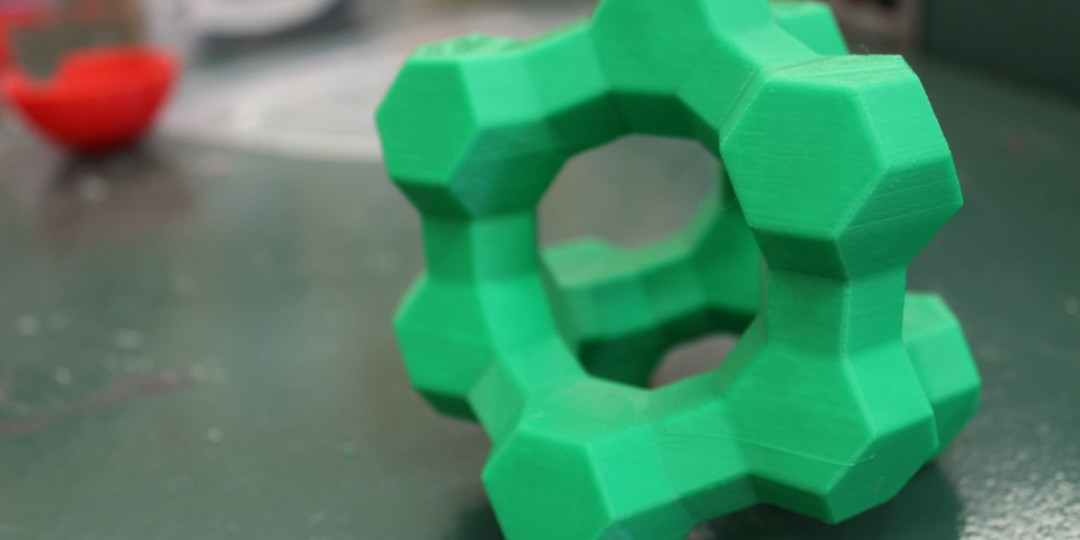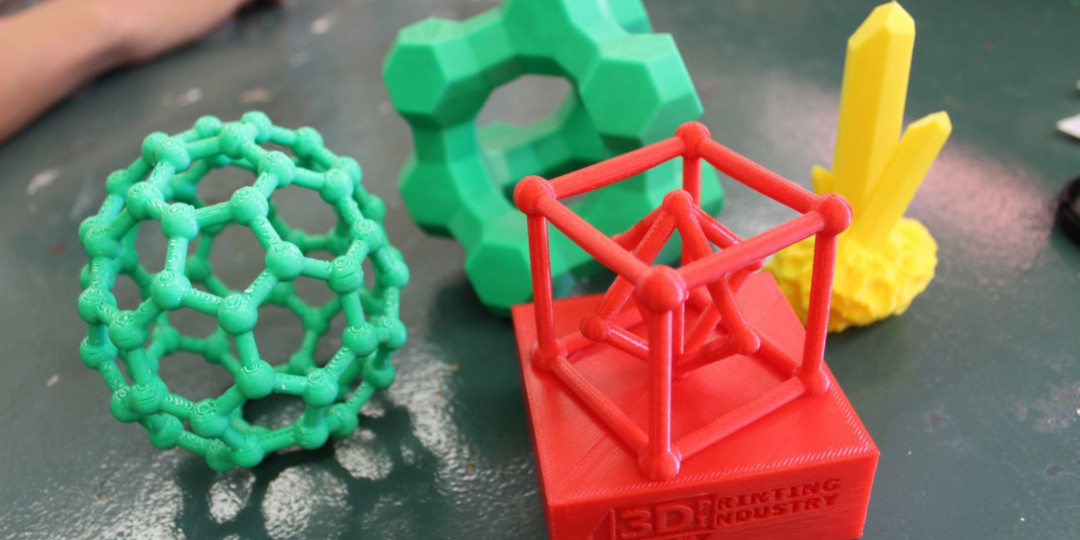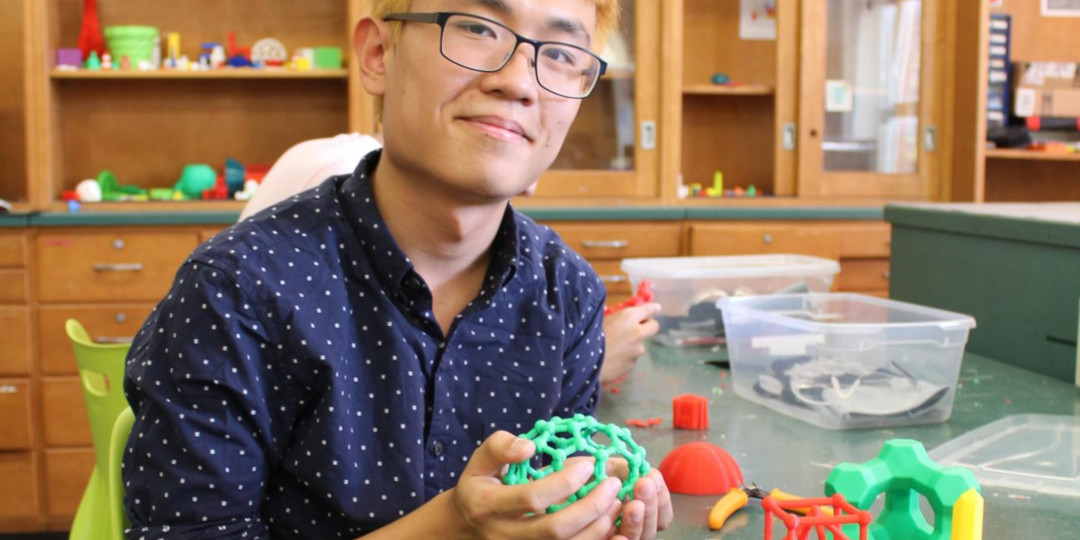When the Ultimaker Community Team was in Cleveland last October for the International Symposium of Academic Makerspaces (ISAM) we met David Ecker, the Director of iCREATE, Stony Brook's community of thinkers, creators, and innovators. After returning home, David introduced us to iCREATE's Tiffany Huang who shared many of iCREATE's success stories, and who volunteered to write this piece about one of their students, Jackie Zheng.
Jackie Zheng is a sophomore Chemistry major who discovered the iCREATE facility at the end of his freshman year. Since then, he’s been involved in the 3D modeling and printing in the iCREATE facility’s Self Service and print queue, which employs a number of UP Mini 2’s, Taz’s, and Ultimakers.
As the event coordinator for ACS (American Chemistry Society), a club of about 20-30 members, Jackie handles a portion of the community outreach that has events with elementary school children that teaches and demonstrates different chemical reactions and explanations.
Every year, the club participates in the Hall of Science’s “National Chemistry Week” in October. This event draws many people, Universities, professors, and researchers to discuss and talk about chemistry. For the year 2017, the theme is “Chemistry Rocks” and is open to all interpretations of the theme. Jackie says, “We’re taking this literally, and wanted to show the science and chemistry behind rocks. We want to show minerals, rocks, and crystals through models.”
While Jackie had learned from modeling in high school, he’s trying to learn more through exploring his options. So far, he has experimented with TinkerCAD, and wants to take 3D printing more seriously by using the software and technology available at the iCREATE facility.
For 2017’s National Chemistry Week, Jackie has printed a “Buckyball” model, the structure for bronze, as well as a model of a crystal.
“Models of these, especially the nice metal ones, can be several hundred dollars each.”
The Buckyball is about 70 carbon atoms in a structure that is being used in research to deliver drugs in the body. The ball, rounded and hollow structure from connected, fused rings, can “hold” the drugs inside it. The other two structure models provide a better understanding through visualization and handling.
Jackie finds that models are a more effective way to both teach and learn the basics of chemistry to the younger kids and students, with hopes that they want to pursue chemistry in the future from having earlier exposure.
“You can always draw a molecule on the board; it might be cool, but it’s not real as seeing how it is in front of you. Having the model is the starting point to learn, and not just through memorizing.”
For another future project in chemistry and 3D printing, Jackie is thinking about printing his own molecule kit. They’re typically needed and used for the organic chemistry classes, and they cost approximately $30 each. “I want to be able to model and make everything myself.”


























